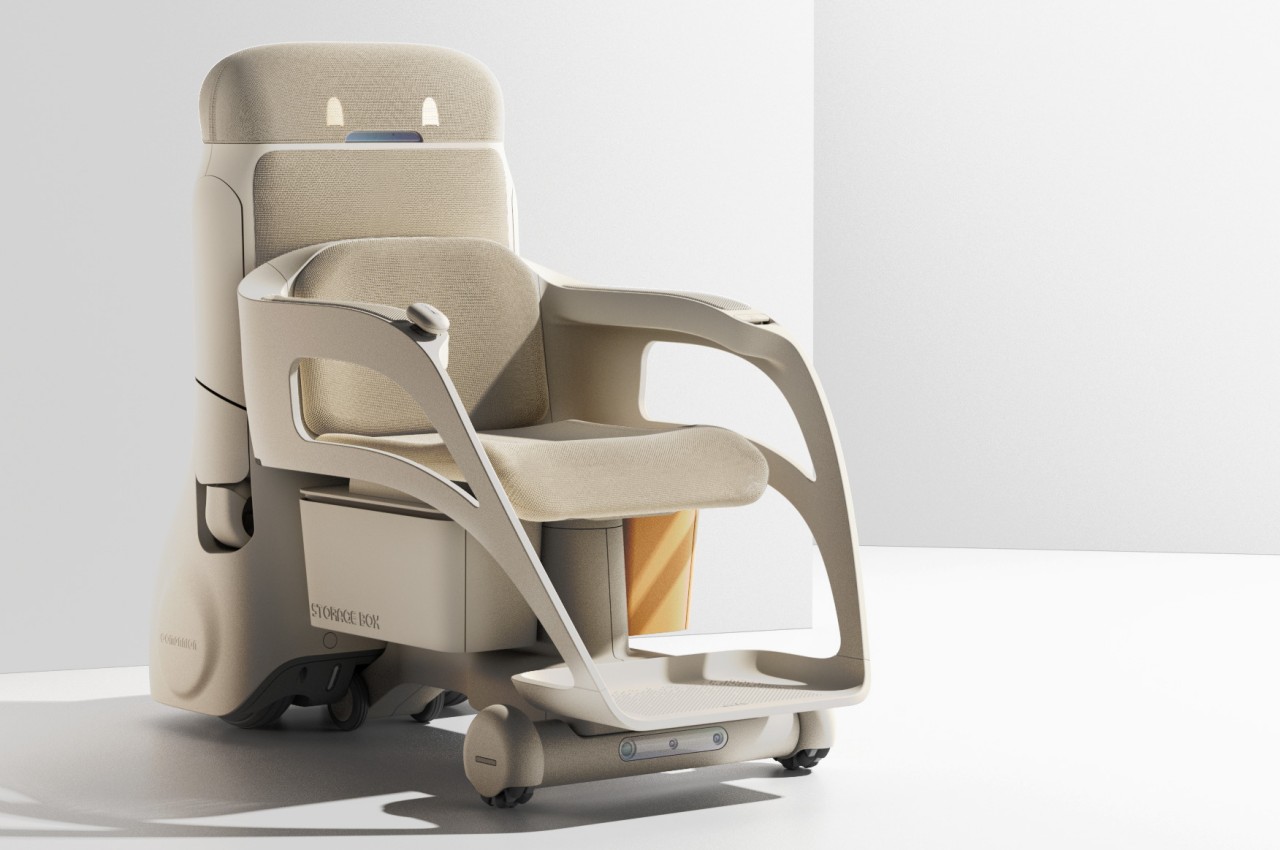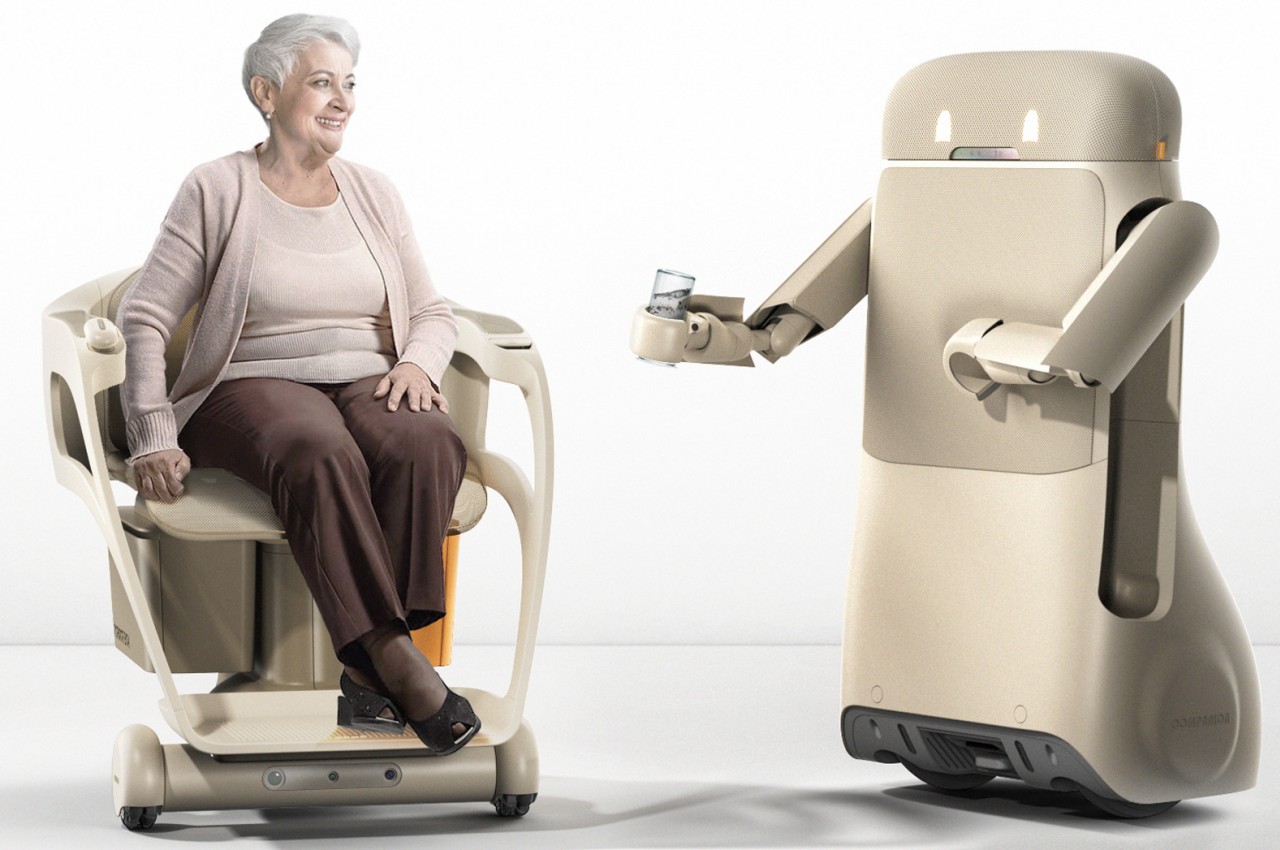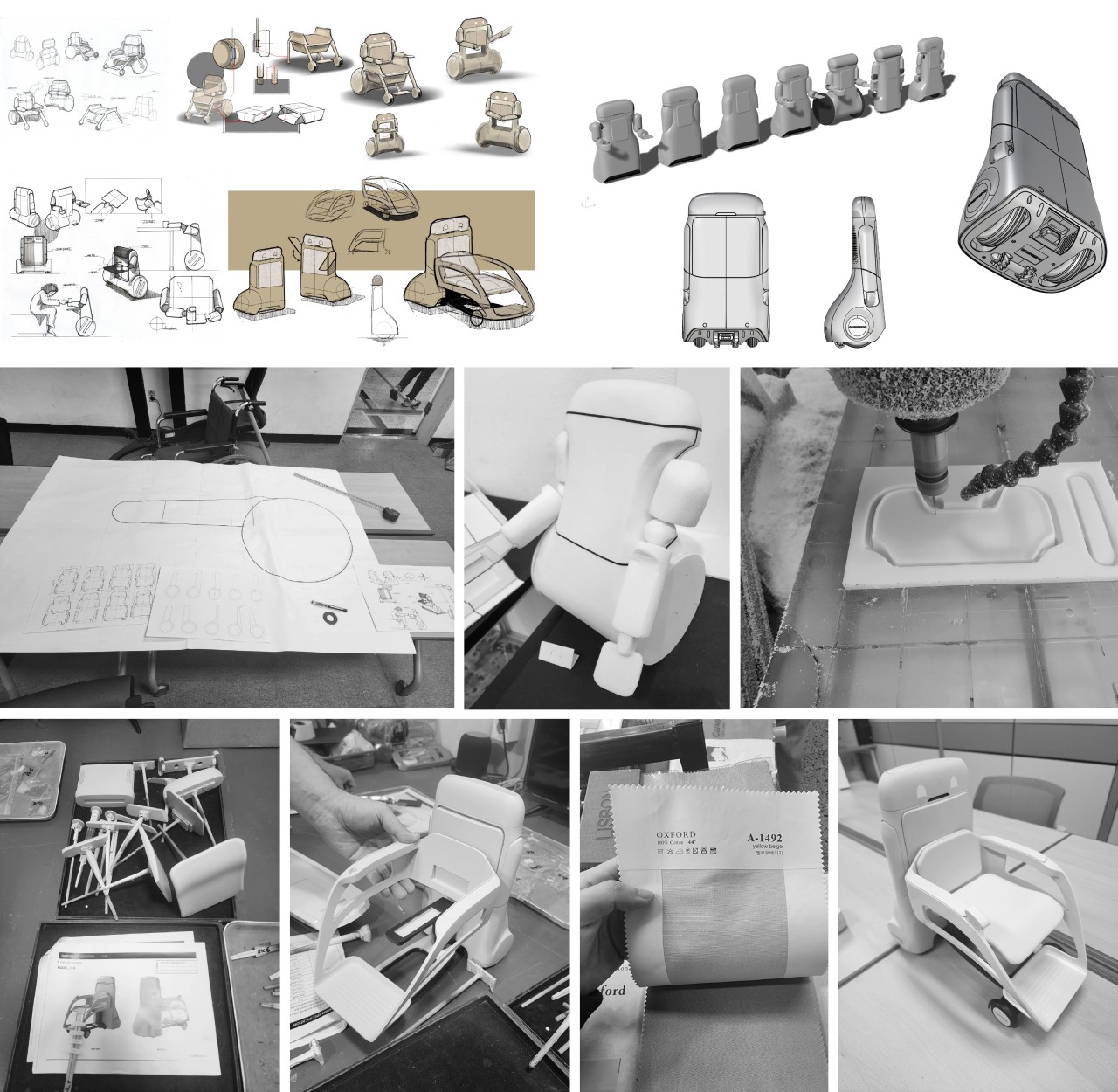
More than just the population problem, we are also facing a crisis in terms of care for the aging segments of that population. Traditional geriatric care centers are sometimes filled beyond capacity, and caring for elderly people living alone can be expensive and at times even risky. Futurists and visionaries would have us dream of a future where robots, whether humanoid or not, would take the place of household help, and we’re starting to see some of those rolling boxes in homes, often for less critical conveniences like bringing things from one place to another. Human care, however, is a very different matter entirely, so this concept design for a service robot and an advanced wheelchair duo tries to paint a different picture by making the experience look and feel a little bit more human and, therefore, more humane.
Designer: Sungmin Hwang


Geriatric patients living at home need more than just having things brought to them, which is what many home service robots are designed to do. They will also want to move around, on their own or with assistance, and motorized wheelchairs try to make that activity more convenient. These two mobility activities might be related, but they’re provided by two very different kinds of products. But rather than having disparate and disconnected machines, this design concept presents an integrated system that acts like a whole, even if they function separately.
The actual “companion” is a service robot that looks like a tall board with arms and wheels, unlike the common design that’s practically a self-driving cabinet. It has a simplified face, basically just eyes that can express emotions and a dot matrix display that can spell out words, but it’s enough to give it a more personable character. Rather than having shelves to put items on, the robot has harms and hands that can grab and hold objects to hand them over to the patient, making the action feel more personal rather than clinical.
The other half of the duo is a motorized wheelchair that’s designed as much for comfort as it is for mobility. In addition to the cushioned surfaces and curved parts, the chair features plenty of storage space not just for things but also for medicine. The patient can exercise their own agency by driving the wheelchair on their own, but it can also be pushed by the companion robot when it connects to the chair. This recreates the experience of having someone push their wheelchair, hopefully making them feel less lonely and less detached.
The “Companion” robot and wheelchair concept is designed with many of the existing technologies already available today, from self-navigating home robots to intelligent charging docks to precision robot hands for carefully grabbing objects. Of course, such a machine would still need to undergo rigorous testing, not to mention regulatory scrutiny given its medical applications, but it’s definitely an interesting take on what a home service robot can do, especially when it’s designed to take care of elderly people or people with mobility disabilities.